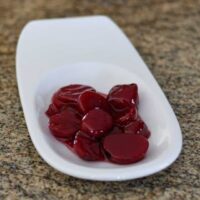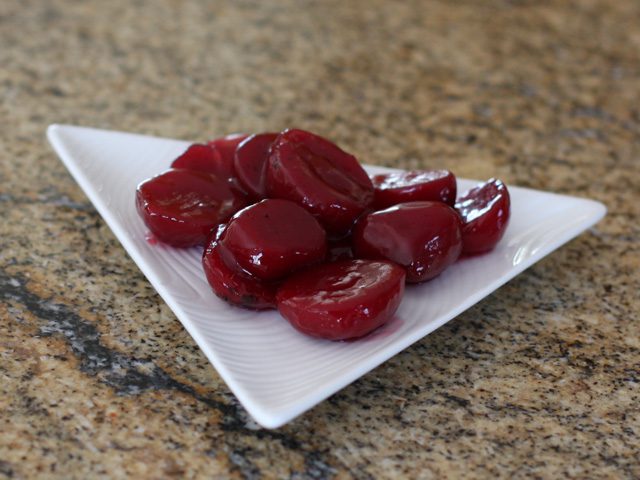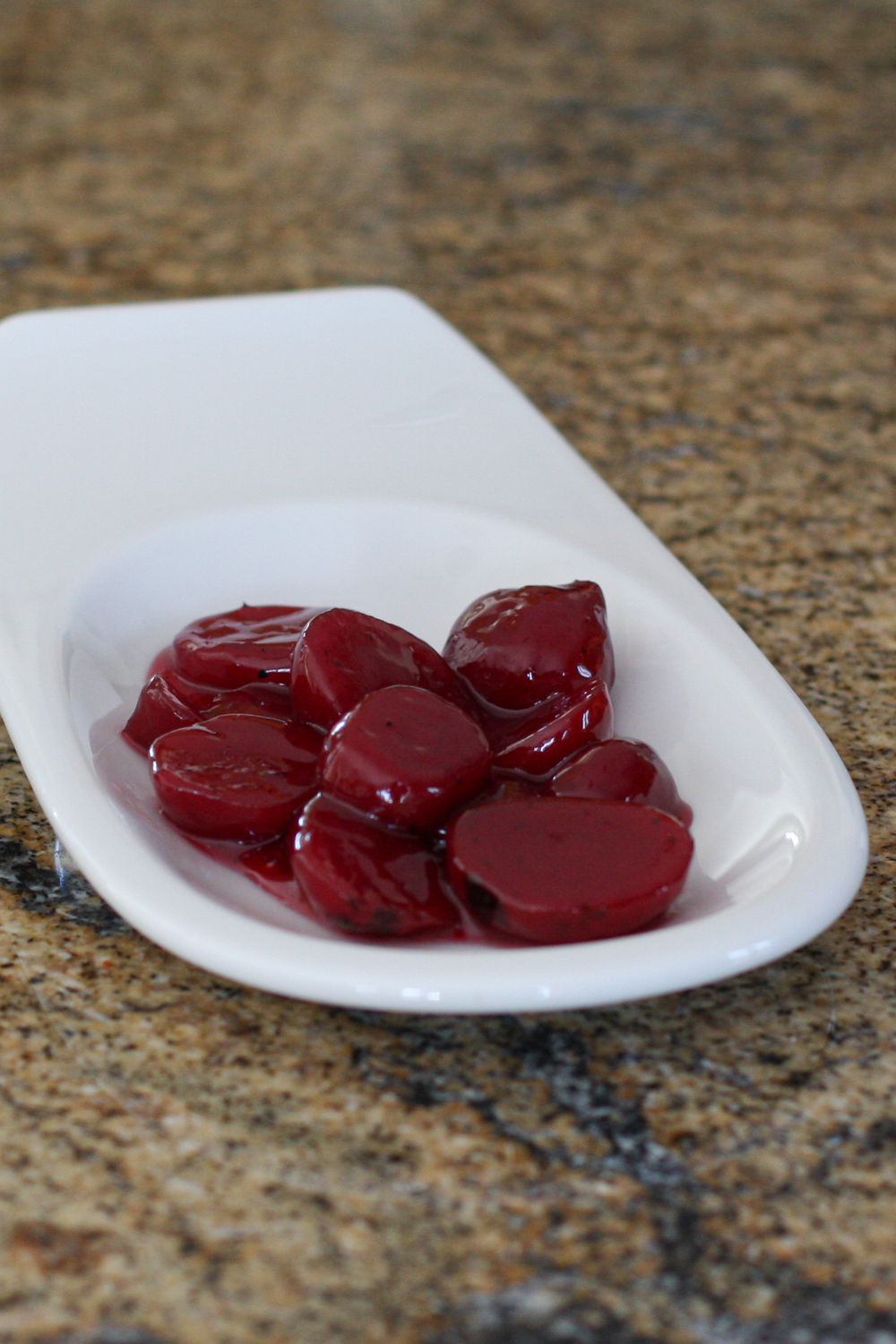Easy Harvard Beets
Discover the deliciousness of Harvard beets with our easy recipe. Sweet and tangy, they’re the perfect side dish for any occasion.

Harvard beets are a classic American side dish featuring tender sliced or diced beets simmered in a sweet and sour glaze. Made with vinegar, sugar, and butter, this dish balances earthy beet flavor with a bright, tangy sweetness that appeals even to those who usually skip beets.
These glossy, ruby-red beets are easy to make using canned or roasted fresh beets, and they pair wonderfully with roasted meats, poultry, or ham. Their vibrant color and simple ingredients make them a timeless favorite for both everyday meals and special occasions.
What You’ll Like About This Recipe
- Classic sweet-and-tangy flavor. The combination of sugar and white vinegar creates the signature Harvard beet taste—balanced, bright, and slightly nostalgic. The sauce isn’t overly sweet, and the vinegar gives a pleasant acidity that lifts the earthiness of the beets.
- Quick and convenient preparation. Using canned sliced beets eliminates peeling, roasting, and staining your cutting board. The glaze cooks quickly, the beets warm through evenly, and the entire side dish is ready in well under 30 minutes.
- A beautiful and versatile side dish. The glossy ruby glaze makes these beets visually appealing, whether served with weeknight meals or on a holiday buffet. They pair well with roast chicken, baked ham, pork chops, or classic meatloaf.
- Great flavor and texture balance. The smooth, thickened sauce clings to each slice without becoming gloopy. A pat of butter at the end adds richness, rounding out the acidity and giving the beets a silky finish.
- Crowd-friendly and easy to scale. This recipe uses simple pantry ingredients and scales up well for potlucks or family dinners. Even beet skeptics often enjoy the gentle sweetness and tang of this preparation.
Ingredient Notes
- Canned sliced beets – The easiest choice for this recipe. Look for plain beets rather than seasoned varieties so the glaze remains balanced. Diced beets can also be used if preferred.
- Granulated sugar – Provides sweetness and also helps the glaze become glossy as it simmers. Slightly packed sugar will create a thicker sauce; loosely measured sugar produces a lighter glaze.
- Cornstarch – Thickens the sauce gently without making it heavy. Mix it well with the sugar before adding liquid to prevent lumps.
- White vinegar – Gives the classic tangy backbone of Harvard beets. Apple cider vinegar can be used for a rounder, slightly fruity acidity.
- Butter – Stirred in at the end for richness and sheen. It smooths out the sharper notes of the vinegar and produces a silky finish.
- Salt and black pepper – Adjust to taste. A small amount of pepper adds warmth and enhances the sweetness of the glaze.
How to Make It
- Mix the sugar and cornstarch in a saucepan before adding liquid so the cornstarch disperses evenly and prevents lumping.
- Whisk in the vinegar and water until smooth, then place the pan over medium heat to begin thickening the mixture.
- Stir as the sauce heats; it will become glossy and slightly translucent once the cornstarch activates.
- Add the drained beets to the saucepan and gently fold them into the glaze so they remain intact.
- Simmer the mixture, stirring frequently, while the sauce reduces and clings to the beet slices.
- Stir in the butter to enrich the glaze and give the beets a silky texture.
- Taste and adjust the seasoning with salt and pepper, then serve warm.
Pro Tips
- Rinse lightly if your canned beets are packed in salted liquid, which can affect the final seasoning.
- Simmer slowly to allow the glaze to thicken evenly without scorching; beets contain natural sugars that can stick to the pan if cooked too quickly.
- Stir gently to avoid breaking the slices, especially once the beets have softened in the warm glaze.
- Balance the acidity by adding a splash more vinegar or a pinch more sugar depending on your personal taste.
- Add the butter last to keep the glaze smooth and prevent separation.
Recipe Variations
- Cider vinegar version. Substitute apple cider vinegar for a slightly sweeter and more rounded acidity. This variation pairs especially well with pork dishes.
- Spiced Harvard beets. Add a pinch of ground cloves or allspice to the glaze for a warm old-fashioned flavor reminiscent of holiday meals.
- Orange-kissed beets. Stir in a tablespoon of orange juice or a bit of orange zest to brighten the sauce and complement the sweetness of the beets.
- Honey-sweetened version. Replace part of the sugar with honey for a softer, more floral sweetness. Honey also adds a bit of depth to the glaze.
- Pickled beet twist. Use pickled beets instead of plain canned beets and reduce the vinegar slightly. The result is more complex and tangy.
What to Serve With Harvard Beets
- Meat dishes: Serve with roast chicken, pork loin, or baked ham.
- Holiday dinners: A colorful addition to Thanksgiving or Easter tables.
- Vegetarian plates: Pair with mashed potatoes or grain salads.
- Everyday meals: Add to any meal needing a pop of color and flavor.
How to Store
- Refrigerate: Store cooled beets in an airtight container for up to 4 days. The glaze will thicken slightly as it chills but loosens again when reheated.
- Freeze: While possible, freezing is not ideal because the texture of canned beets softens further. If needed, freeze for up to 2 months in a tightly sealed container.
- Reheat: Warm gently in a saucepan over low heat, adding a splash of water if the glaze becomes too thick.

Easy Harvard Beets
Ingredients
- 2/3 cup granulated sugar
- 2 teaspoons cornstarch
- 1/3 cup white vinegar
- 1/3 cup water
- 2 cans beets, (about 16 ounces each) sliced, drained
- 1/4 teaspoon salt
- 1/8 teaspoon ground black pepper
- 3 tablespoons butter
Instructions
- Prepare the Sauce: Combine the sugar and cornstarch in a medium saucepan. Whisk in the vinegar and water and place over medium heat. Cook, stirring, until the mixture is thickened.
- Make Harvard Beets: Add the sliced or diced beets and continue cooking, stirring frequently, for 15 to 20 minutes or until nicely glazed with the sauce. Add the butter and add salt and pepper, to taste.
- Serve and enjoy!
Nutrition
Disclaimer:
Our nutritional information is based on a third-party application that analyzes the ingredients list to determine the values. The information is meant to be helpful, but should be considered an estimate. Values may differ depending on measurements, brands, serving variations, and database availability.





